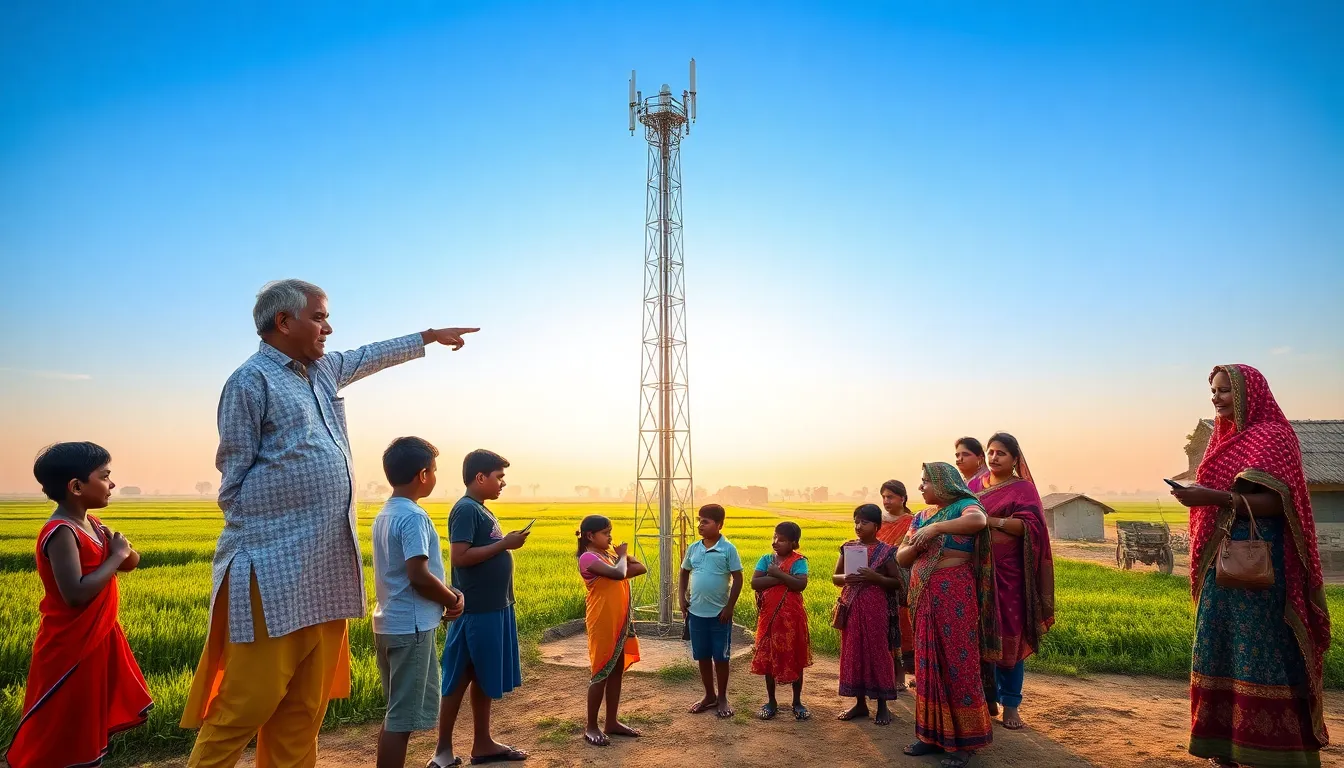Gujarat is set to enhance digital connectivity in its villages through the BharatNet Phase-3 project. This initiative aims to connect a total of 14,287 gram panchayats and 3,895 villages with modern digital infrastructure. The announcement was made during a significant meeting in Gandhinagar, where the Chief Secretary of Gujarat, Pankaj Joshi, and the Secretary of the Ministry of Telecommunications, Neeraj Mittal, were present. This project is part of the amended BharatNet plan, which focuses on bridging the digital divide between urban and rural areas.
Under Phase-2 of the BharatNet project, over 8,000 gram panchayats in Gujarat were connected, giving the state a 95% network uptime, the highest in the country. The new Phase-3 aims to provide similar connectivity to remote regions, ensuring over 98% service uptime. This ambitious project will significantly improve the quality of life for citizens living in rural areas by providing access to high-speed internet.
The partnership for this project includes the Gujarat Department of Science and Technology, Gujarat Fiber Grid Network Limited (GFGNL), the Digital India Fund from the Government of India, and Bharat Sanchar Nigam Limited (BSNL). The signing of the memorandum of cooperation marks Gujarat as the first state to implement this state-based model for BharatNet Phase-3.
In October 2024, during the India Mobile Congress, the Gujarat government will officially launch this initiative. The government has received theoretical approval for ₹5,631 crores for the capital expenditure and operational expenses for the next ten years. This funding will facilitate the rollout of high-speed internet services across the state’s rural areas.
With the implementation of BharatNet Phase-3, the government aims to ensure that all citizens, including farmers, students, and women, can access essential electronic and value-added services directly. This will help improve the standard of living for underserved rural populations. Furthermore, it is expected to provide opportunities for digital governance and enhance the overall socio-economic conditions in these areas.
The Gujarat government has already established numerous government services, known as the Digital Seva Setu (E-Gram) programme, which is available through over 14,000 E-Gram centres. As a result, more than 1.6 crore citizens have benefited from these connectivity services. The state is also connecting over 7,500 schools, 765 health centres, and numerous iconic sites to the BharatNet Phase-2 network.
The project also aims to improve mobile coverage in remote areas by installing over 290 telecom towers. This will ensure that residents in these regions have reliable mobile connectivity.
The future rollout of the amended BharatNet Phase-3 project will not only strengthen Gujarat’s digital infrastructure but also set a benchmark for similar initiatives across the country. With this project, the Gujarat model of digital connectivity is expected to become more prominent and robust, benefiting the state’s rural communities and fostering inclusive growth through enhanced digital access.


Leave a Reply